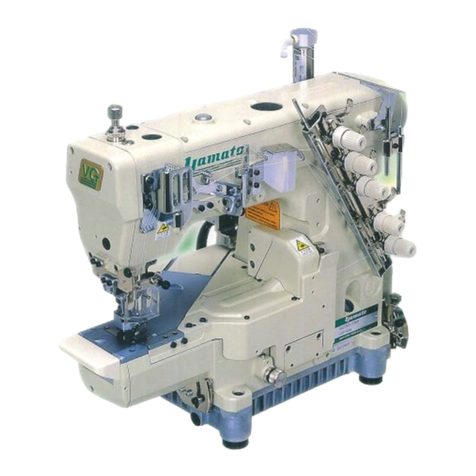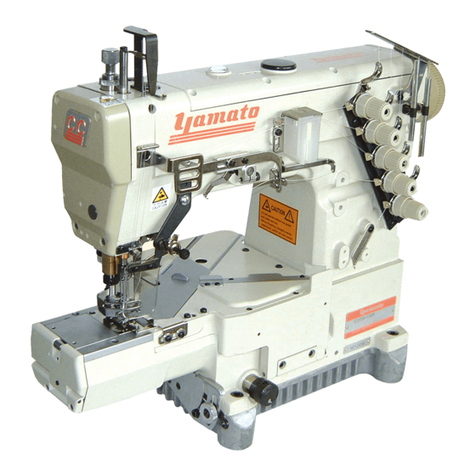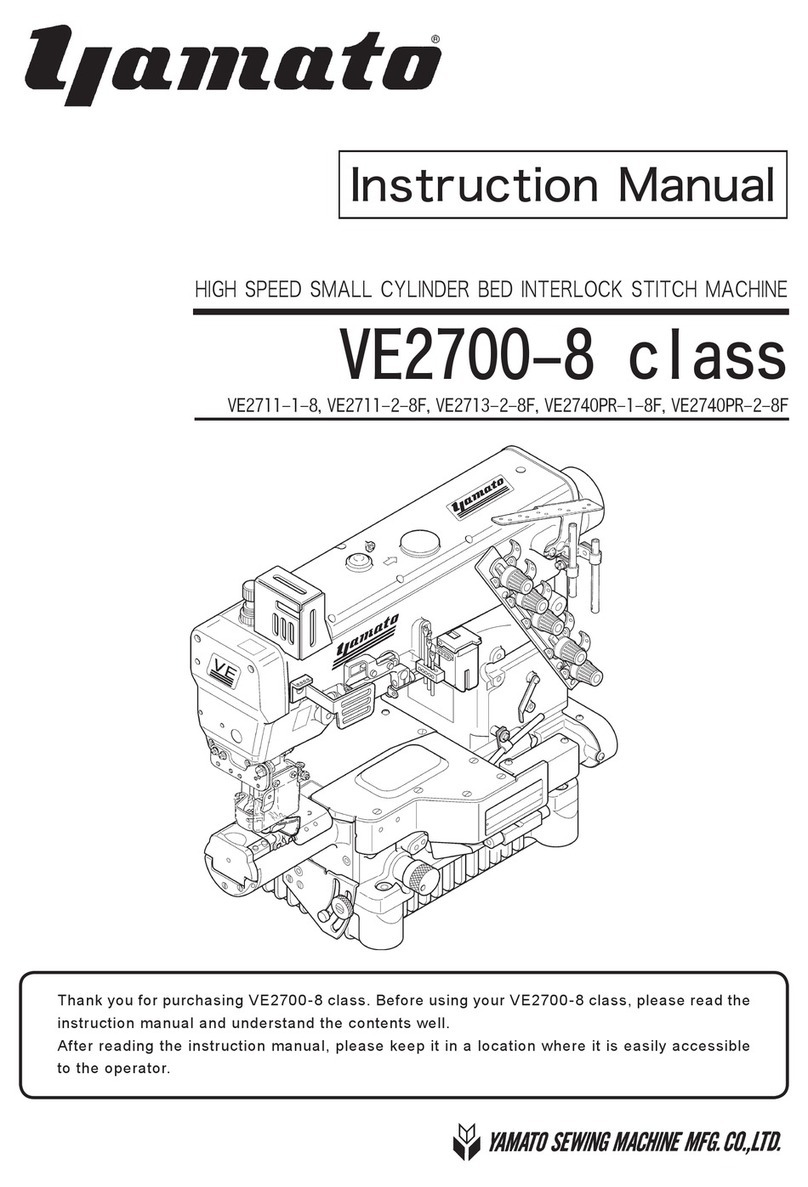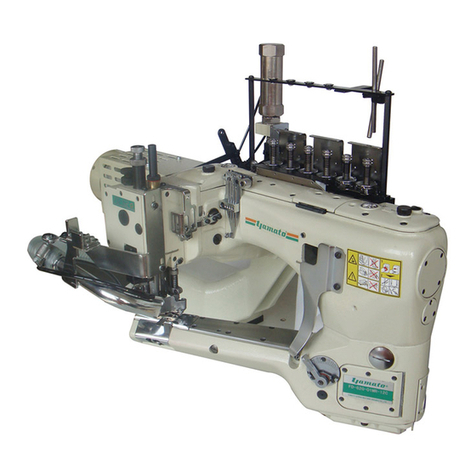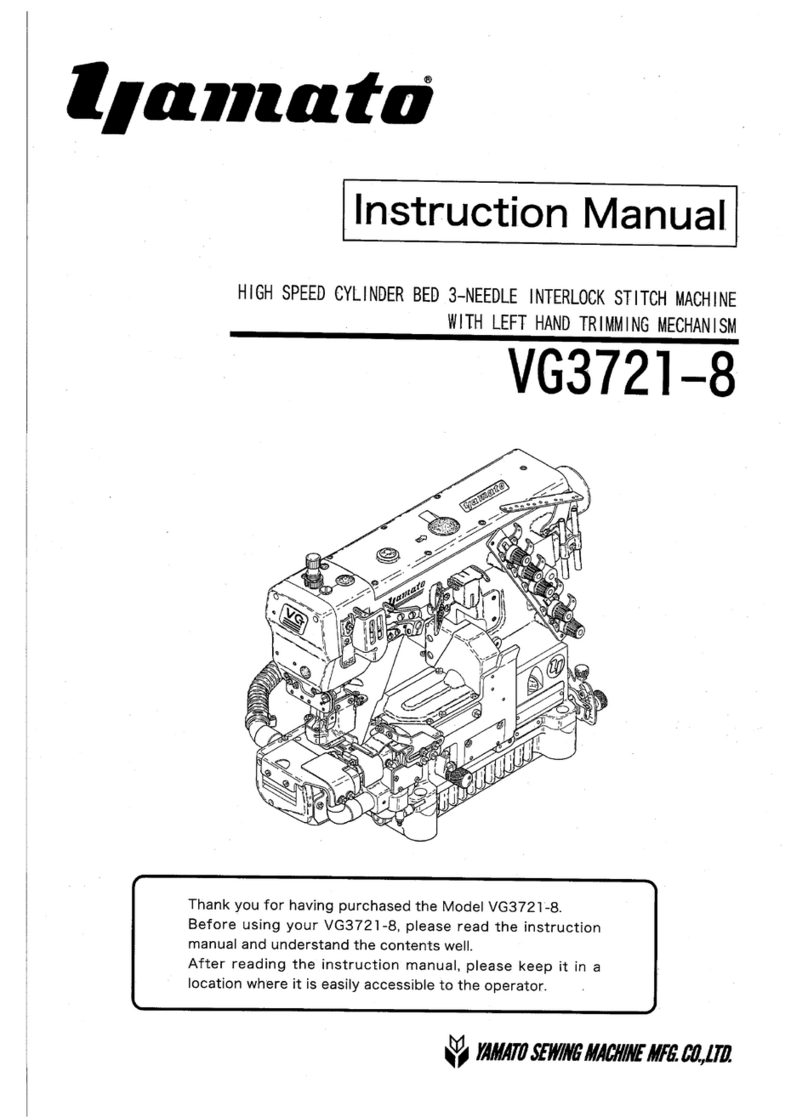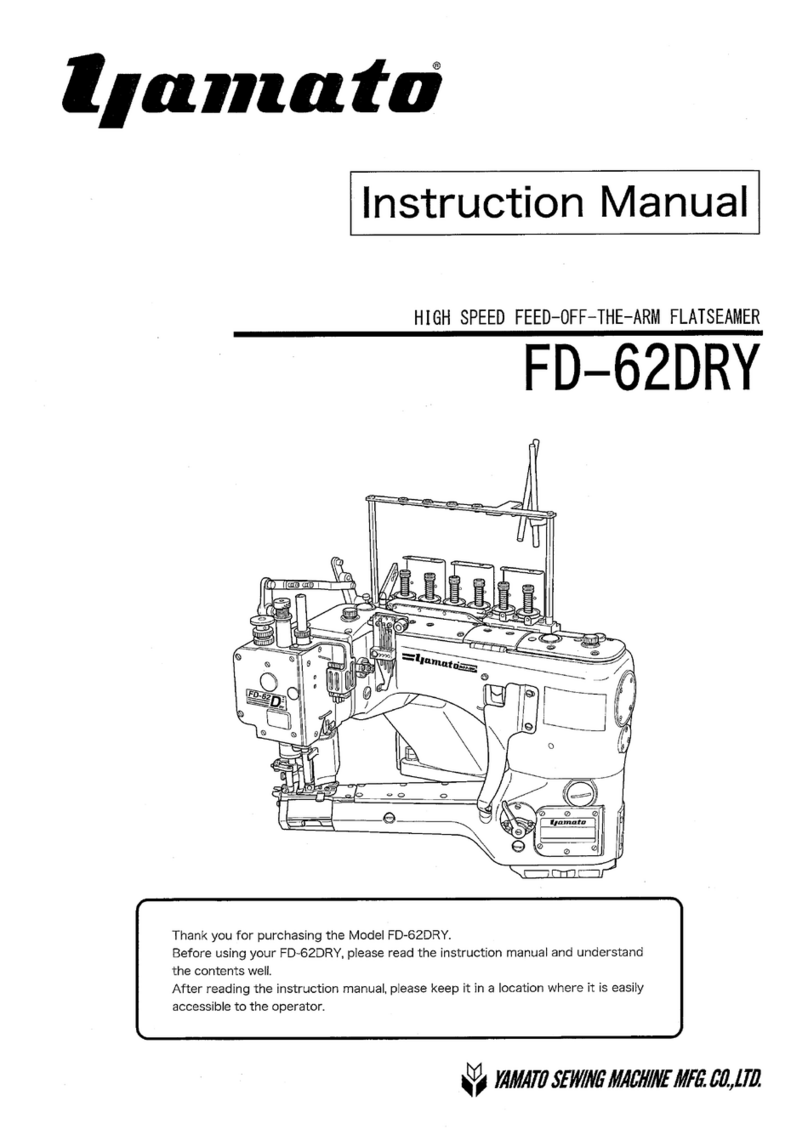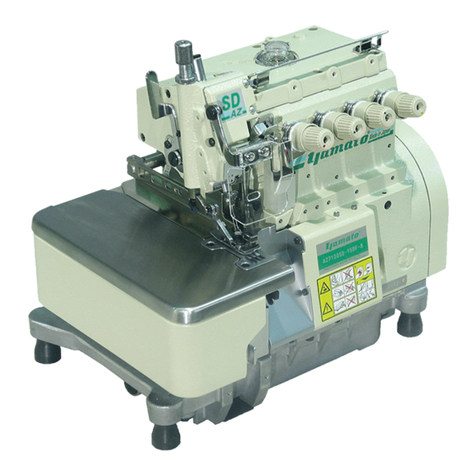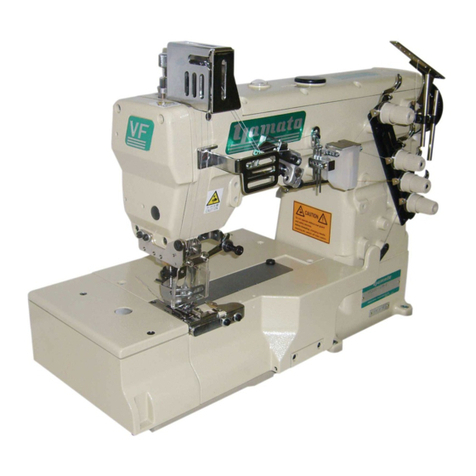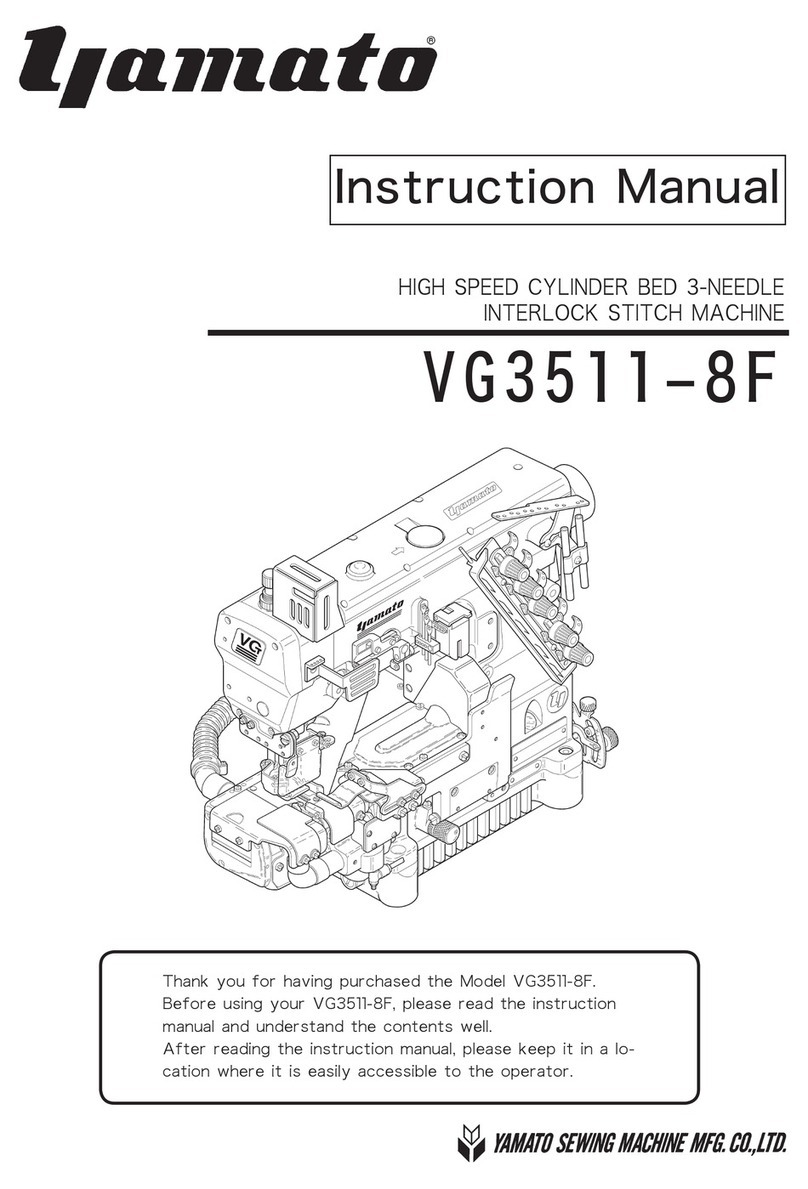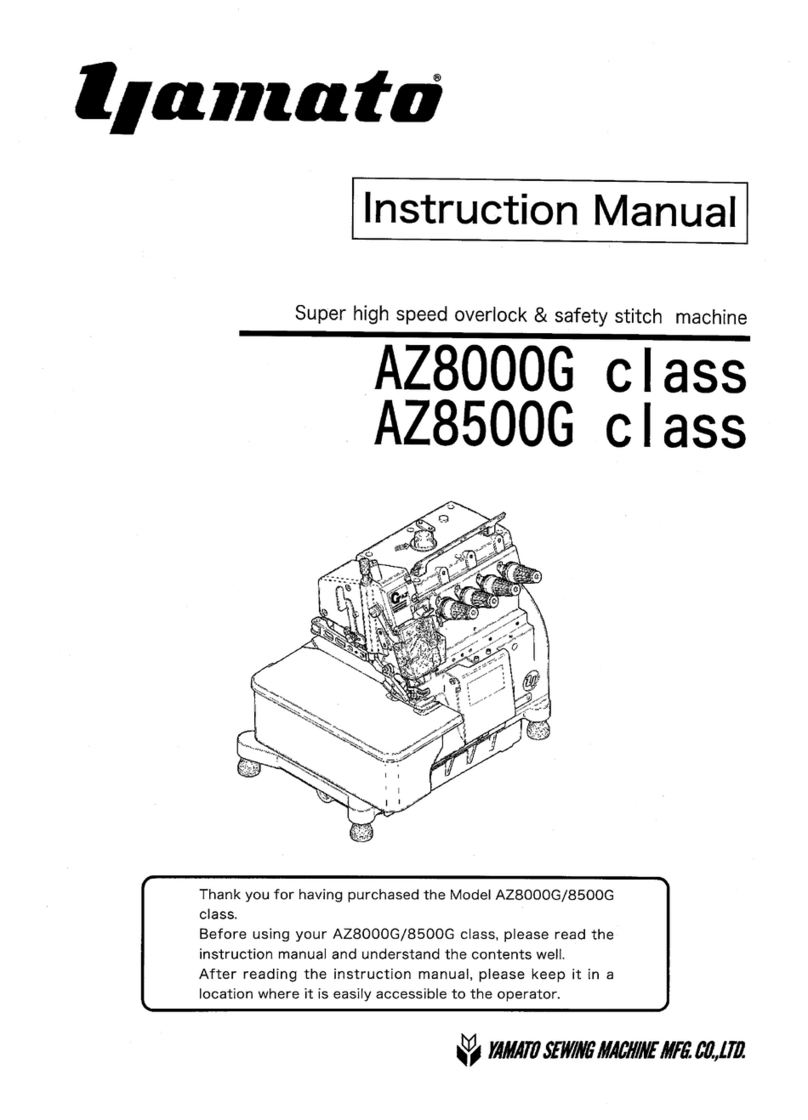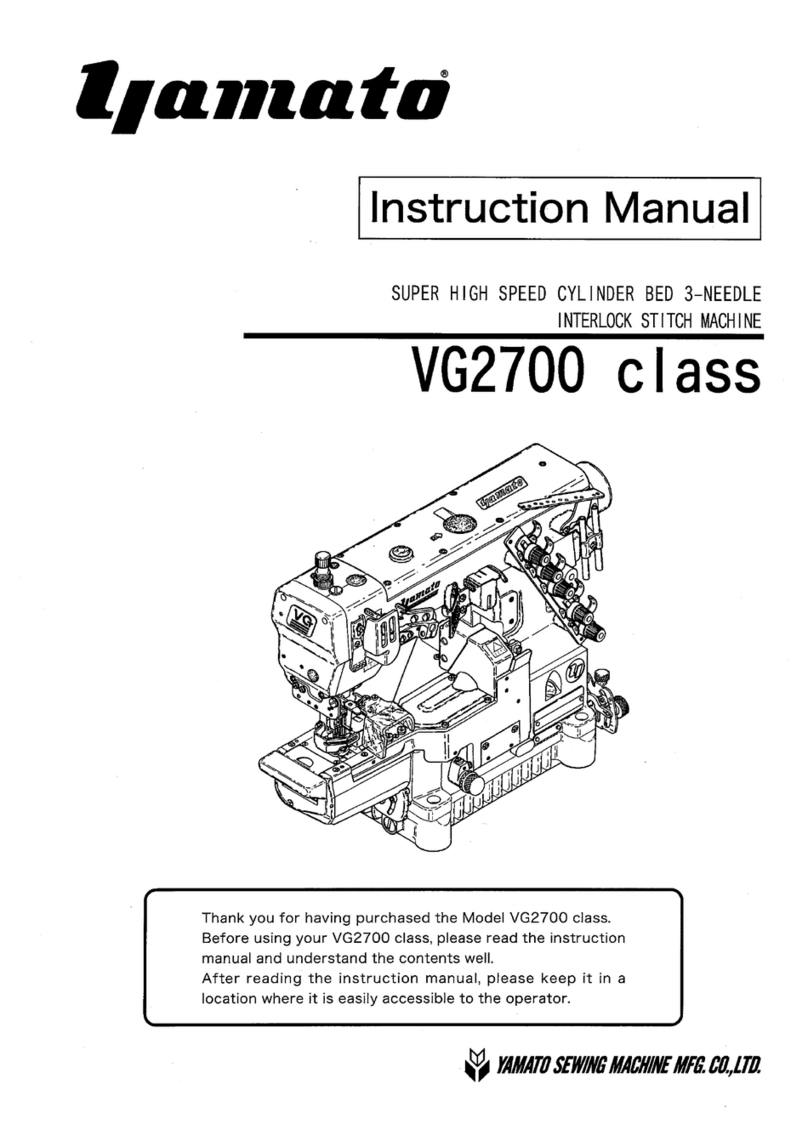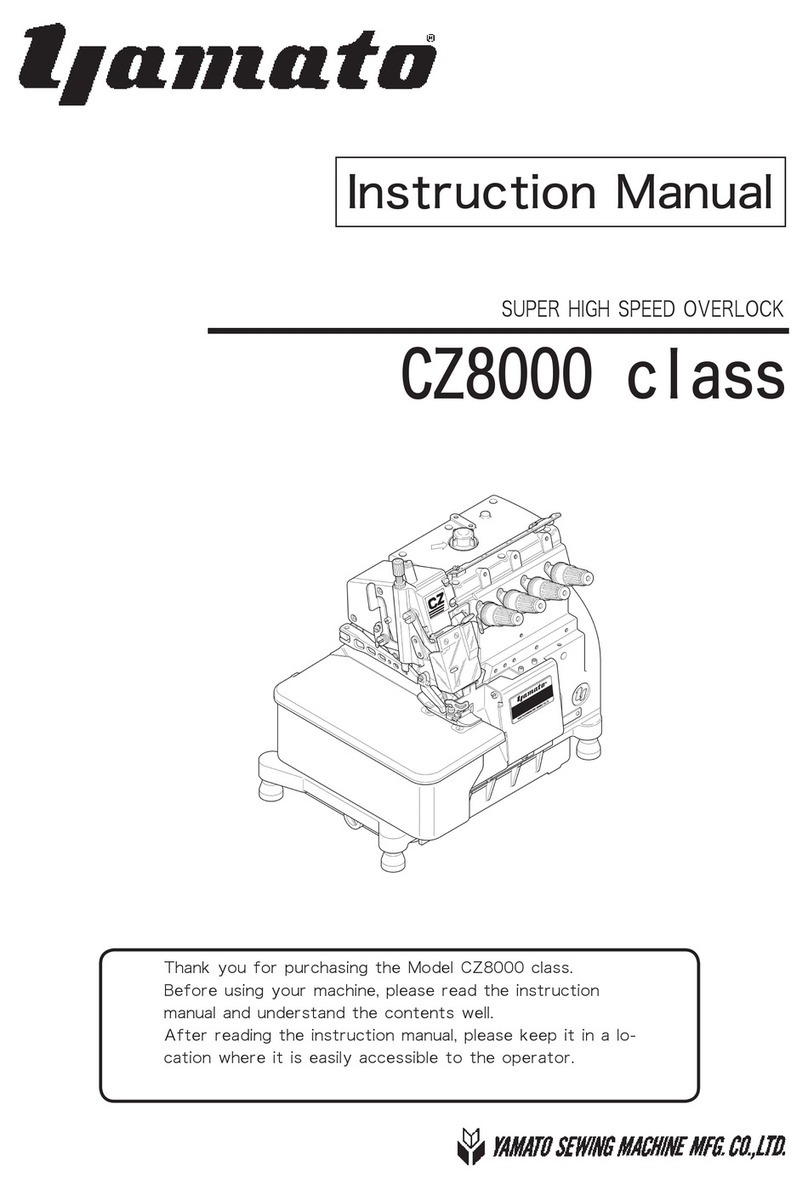2.3 Wiring
(1)Never connect the plug for power supply
until assembly is nished.
(2)Fix the connectors securely to the
sewing machine head, motor, and electric
apparatus.
(3)Do not apply excessive force to the
connection cords.
(4)Connect the cords away from the driving
parts.
(5)Place the ground wire securely to the
designated position on the machine head.
2.4 Before operation
(1) Take care not to attach lubricant,
silicone oil, and grease on the eyes or
skin. Keep them away from children.
(2) Be sure to fill or drop lubrication oil
before operating the sewing machine.
Use the Yamato SF oil as specied.
(3) Never put your hand under the needle or
near the moving parts of the machine when
turning on power supply switch.
(4) When operating a new sewing machine, make
sure the rotating direction of pulley
agrees with the rotating-direction mark.
2.5 During operation
(1) Be sure to operate the sewing machine with
the safeguards such as belt cover, nger
guard, and eye guard.
(2) Never place the finger, hair or objects
under the needle or close to the moving
parts while operating the sewing machine.
(3) Be sure to turn off the power supply
switch when threading or replacing the
needles.
(4) Never place your hands close to the knives
when operating the sewing machine with the
trimming devices.
(5) Be sure to turn off the power supply
switch when terminating the sewing work or
leaving the sewing machine.
(6) If the sewing machine malfunctions,
abnormal sound or smell something unusual
while operating, be sure to turn off the
power supply switch.
2.6 Removal
(1) Turn off the power supply switch if
removed or replaced any parts or during
adjustment of sewing machine.
(2) Do not pull the cord when removing the
plug. Be sure to hold the plug itself.
(3) A high voltage is applied inside the
control box. Turn off the power supply
switch and wait more than 5 minutes before
opening the cover.
3. Maintenance, inspection, and repair
(1) Follow the instruction manuals for
maintenance, inspection, and repair.
(2) Entrust the maintenance, inspection, and
repair to specially trained personnel.
(3) Be sure to turn off the power supply
switch and make sure that the sewing
machine and motor completely stop before
the maintenance, inspection, and repair.
(If using a clutch motor, take care
that the motor keeps turning for a while
even after turning off the power supply
switch.)
(4) Do not modify the sewing machine by the
customer’s judgment.
(5) Be sure to use original replacement parts
for repairs or maintenance.
Safety Instructions
